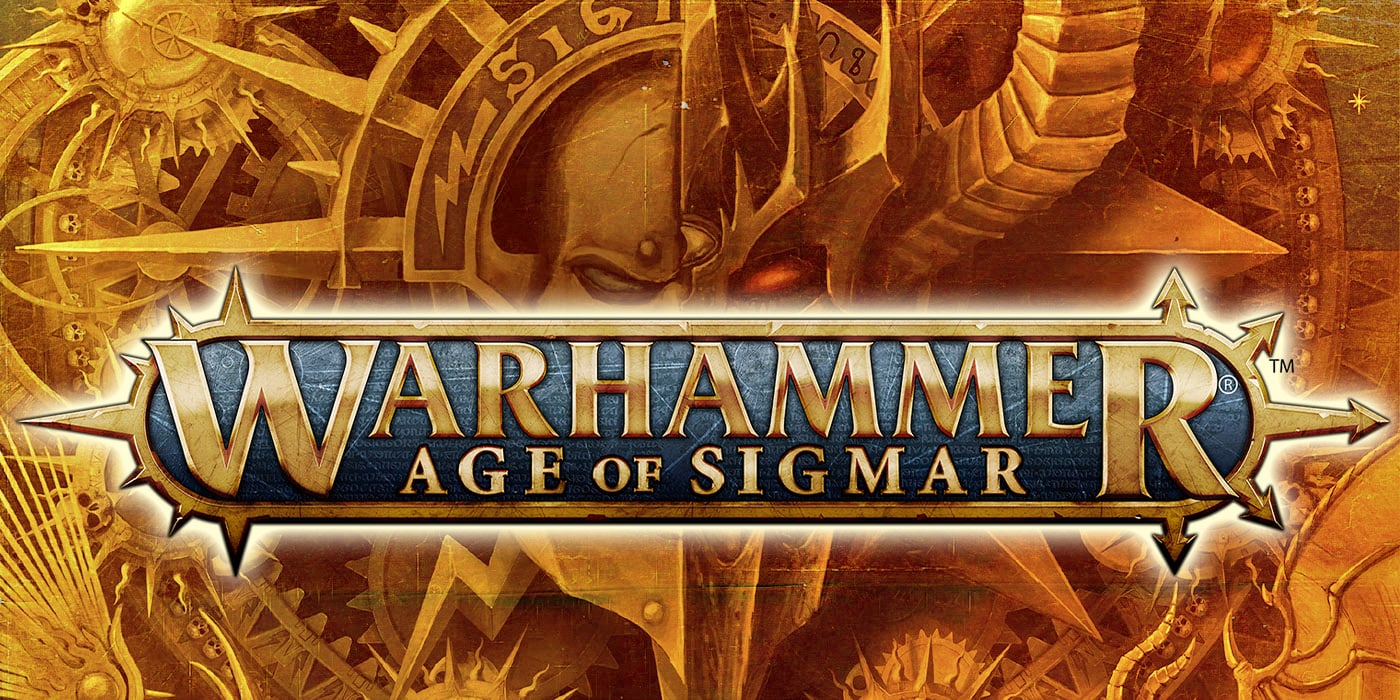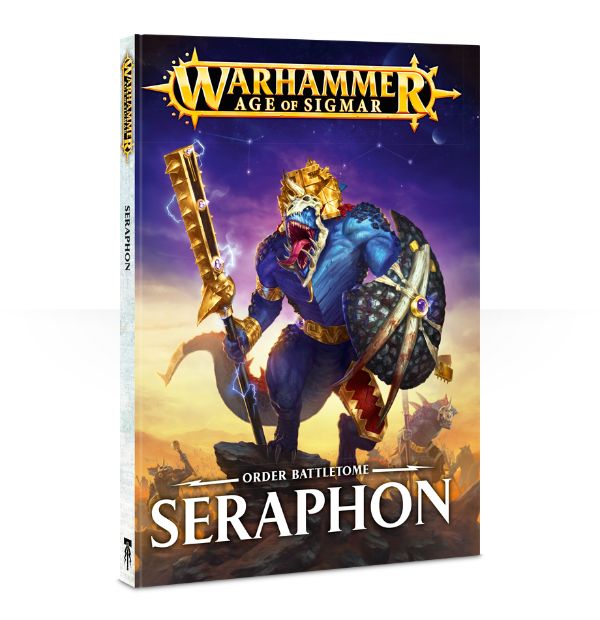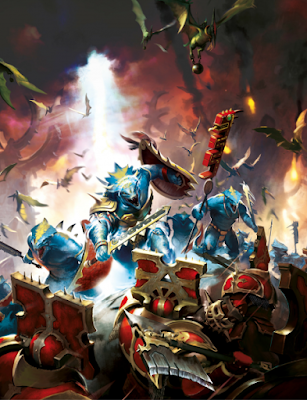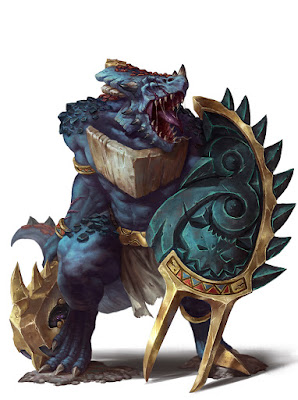REVIEW: Seraphon Battletome


The Seraphon, or as we used to know them as, the Lizardmen, are the first returning race in Age of Sigmar. So how were they handled and how do they fit into the new Mortal Realms?
Everything up to this point had been entirely new, or mostly new factions, but now we had true survivors of the World-That-Was.
When this Battletome came out I was really excited to get my hands on it and give it a read, even though I didn’t play Seraphon at all or have any intention of starting to. It was really hard for me to justify spending money on it when I was never going to use it, luckily for me though, my friend plays them and picked it up. After he had read through the whole thing I asked if I could borrow it to review.
Right off the bat, I have to say that I absolutely love the cover art for this book. There is something so peaceful and majestic about it. Even though the Saurus is armed for war, he’s not actually fighting. The colors on it are very soothing as well, showing a perfectly clear night sky somewhere within the Realms. I think this suits the Seraphon perfectly. Although they can be swift and brutal, in the end they strive for balance and peace. Their goal is to create and maintain order, and ideally, a perfectly peaceful world. I won’t lie, this cover was my phone’s background image for a few weeks. I would say that it’s my favorite Battletome cover so far.
Once you crack the book open we immediately move into the lore. These are literally the exact same Slann who fled the Old World during the End Times. Having been cast adrift in deep space within their temple space ships for millennia, the Slann themselves are the only real survivors by the time we get to the Age of Sigmar. All of the other Saurus and creatures presumably having died off from old age or other ailments. So how do they have an entire army you may ask? I’ll get to that in a minute. Isolated and alone, the remaining Slann were found by Dracothian who took pity on them and led them back to the eight Mortal Realms. Here they set up base in “high Azyr”, which I assume to mean outer space above Azyr. Now the Slann seemed to have gained an interesting ability during this long stretch of time. They can now call forth their memories into reality. It’s pretty similar to the Chaos Demons being summoned into the real world in fact. The Slann remember Saurus Old Blood Bob and all of a sudden Bob is there. Not just a memory of Bob, but really, actually Bob. Somehow.
This is where it all starts to fall apart. I think this was a really cool idea, but they didn’t follow through on it and contradict themselves several time throughout the book. At first it’s implied that the rest of the Seraphon race only exists within the memories of the Slann, and when they are not on the field doing battle, they literally don’t exist in reality. Other times though it’s made to seem like they do exist, just in some other time or place and are drawn into the Mortal Realms by the Slann’s memories. For instance, a Saurus warrior can take an enemy’s head as a trophy and then disappear at the end of the battle. Then in the next battle it’s summoned to, it will still have the very same trophy it took in its last battle. To me this implies that the Saurus is a real, physical being, who went somewhere real after the last battle and didn’t just vanish into memory. They can also obtain scars that will stay with them.
There is also a small vignette story where a Slann is sleeping (presumably on board its space ship) and it is woken by a Skink Priest, who informs him of some Khorne warriors they need to go kill. Again, this makes me think that the Skink exists independent of the Slann and isn’t just a fragment of its mind. Unless that Skink represents the Slann’s subconscious. It’s all very confusing and is never really cleared up. I don’t know which I would prefer, but I think I’m leaning towards wanting the Seraphon to be real and actually exist somewhere outside of distant memories. One last point, if they really are just memories then why have all the special characters been removed? Surely at least one of the Slann would remember the greatest general they ever had in Kroq-Gar? I may have made it seem like there is a lot written there too, but it’s only about seven pages, and mostly pictures. This is definitely less then the Stormcast and Bloodbound book. It is cheaper though in price. Like I said, both ideas are fairly cool and definitely unique, but since they never clarify which one it is it’s hard to get behind either of them.
There is also a timeline like in all of the books so far. I always enjoy these since it allows the writers an opportunity to sprinkle in cool hooks and ideas. There’s not much to talk about here, but the Seraphon one is just as good as the others with plenty of battles mentioned.
After that we move onto the individual unit descriptions. This helps to flesh things out a bit more, but not by much. We learn that Skink Starpriests can act in the place of the Slann with summoning and maintaining a Seraphon army, which again raises questions of if they are real or not. For the most part though it just tells you what the unit DOES on the battlefield, not WHO they are. It’s mostly just descriptions of how ferocious they are and stuff like that. One notable change is that Kroxigor are no longer the dumb brutes mostly used for manual labor like they were in the past. Now they are highly skilled and respected warriors. That makes sense when you consider there is no longer any manual labor for them to do, but if they are just memories of the same Kroxigor from the Old World that were dumb brutes wouldn’t they still be that way? Again, contradictions. The only special character to return is Lord Kroak, and he is literally given about one sentence of explanation. I know he’s dead and all, but he was REALLY killed during the End Times. A meteor fell on him. His death had meaning, it was important, and it was shown, so why and how is he back? You know whose death wasn’t explicitly shown? Kroq-Gar, but he’s no where to be found.
I do want to mention that the artwork in this is fantastic as always. There are some truly great battle scenes scattered throughout. I have heard a lot of people picking on the army that’s used for a lot of the shots of miniatures. I’ll admit, it’s definitely not ‘Eavy Metal quality, but they have been using these non ‘Eavy Metal studio armies in their books for awhile now. It’s their effort to present a less intimidating standard for new hobbyists to live up to. I do wish they had more professional level paint jobs scattered throughout though. If you look at the Stormcast and Bloodbound books they did the same thing. I think they just painted those models better, or maybe it’s just that we are not use to seeing the Seraphon models in such bright and cosmic colors.
This book does have some interesting battleplans. The first one is called The Temple of Dead Gods and is intriguing right off the bat since it involves the forces of Slaanesh. Essentially a Slaaneshi Herald is trying to find their lost god, and have made it all the way to this temple where an ancient relic that could help them lies. The Seraphon of course don’t want to see the return of the missing Chaos god, so they teleport in to stop it. It’s a decently enthralling story, with some cool art and maps. The scenario itself is another variation on the relic retrieval ones we have seen so far. The attacking player has five turns to try and claim the relic, which sits in the middle of the Seraphon deployment zone, and make their escape. There are some cool rules to represent how the temple is haunted, as well as how the Seraphon spring their ambush. The way the enemy hero must escape with the relic is also somewhat unique and requires the defending player to really stay on top of them. Overall it’s a pretty cool battleplan.
The next one involves the Seraphon attempting to cleanse an area of land infested by the forces of Nurgle and the Skaven, and stop a vile ritual they are attempting to complete. The battleplan for this is actually really unique and fun looking. The Seraphon player must destroy the skaven spawning pits, and can only win a major victory if they destroy all of them within six rounds. This whole time the chaos player can spawn new units from any of the pits still intact. There are rules on how to destroy the pits, as well a special piece of scenery that can help the Seraphon player destroy them quicker, but it’s deep within the chaos player’s deployment zone. It really seems like it would be an uphill battle for the Seraphon player, with the odds stacked against them. These are some of my favorite kind of battleplans and I wouldn’t mind giving this a shot.
The last one is the first official multi-player battleplan I have seen. It involves the Seraphon coming down in a comet to help out some Stormcast who are fighting a Bloodbound horde. Unfortunately the comet strike seriously destabilizes the island they are on and causes it to start sinking over the course of the battle. The battleplan has only the Stormcast and Khorne player deployed to start with. The Stormcast are completely surrounded and the Khorne player is given first turn as well as a bunch of buffs to really represent how doomed the Stormcast were. Then on the order player’s first turn the Seraphon arrive. Their arrival can actually hurt any Khorne forces nearby to represent the comet striking. From that point on there are also rules to represent the island falling apart, so models can die from falling in gaping chasms of lava. For the order players to win they must completely wipe out every single opposing model by the end of the sixth turn. Again, this can be pretty hard for the order players to win. I really like how unique everything is in this one, and it seems like it could be a ton of fun.
After all of the scenarios we get the Warscrolls for each unit. There’s not much to talk about here, except for the fact that these are missing something every other book has had. There is no two to three sentence description of the unit below the picture. Usually there is a little blurb giving you some brief context for the model. Here they left that out, which just makes it seem like they took the warscrolls we already had for the Lizardmen and gave them a Seraphon facelift without putting much thought into it. Which is okay rules wise. I didn’t really expect the rules to change much or at all. It may have also been an issue of space since the Seraphon rules take up more of the page then the units brand new to AoS tend to. The Battalion formations are okay, but it’s hard for me to get excited about any of them. I just don’t really understand how the Seraphon are organized enough to become enthusiastic about a particular formation from a lore point of view.
The whole thing finishes off with the four page main rules and that’s that.
All in all I was disappointed with this book. I had high hopes for it, and to me it just seems like they had no clear picture of what they wanted to do with the army when they wrote it. The editor should have caught all of the discrepancies and gone back and made sure all of the lore was in line with itself. As it stands I have no clue how they really operate or what they really are. I understand that they like to leave stuff to explore in the future, and that would have been fine here, but you don’t even have a consistent base to work off of. I really hope GW fixes this in the future with some sort of major plot reveal that explains everything. Remember how Kroak broke off pieces of the Jungle, protected them in magic, and sent them into space along with the temple ships as Lustria was being torn apart in the End Times? What happened to those? Was that plot thread just dropped, because to me it seemed like it was setting up the Lizardmen to have somewhere to still live that at least somewhat resembled Lustria. If there are floating pieces of jungle up in the heavens with the Slann ships that the Seraphon are hanging out on I think that would be pretty cool.
I sadly have to say I think this book was somewhat of a mess. There were a ton of really cool concepts and ideas, but there was no consistency between the different parts. The best part of it for me were the battleplans. It does have pretty cool artwork though as well as a few other redeeming parts. If you played the Lizards before this is probably still worth picking up, since there is plenty of visual inspiration and cool story seeds you could expand on your own. I do think a lot of the issues I raised will be less of an issue to anyone new to AoS who has no baggage from the previous editions of Warhammer. To them the Seraphon would probably just be a pretty cool army of dream-lizards and dinosaurs kicking butt and taking names.
Final Score – 2.7/5
The art direction was solid as always, but the new lore lacked the impact needed to really make the Lizards feel at home within AoS. Some interesting new concepts were set up, but so far, have failed on the follow through.
Until next time,
Tyler M.
Tyler is a life long painter and hobbyist and took home his first Golden Demon award at the 2012 Chicago Games Day with a follow up at the 2013 North American Games Day. More of his work can be found at his blog, Mengel Miniatures.















